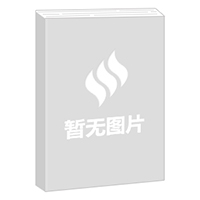中圖網小程序
一鍵登錄
更方便
航空航天粉末材料與技術 版權信息
- ISBN:9787512439016
- 條形碼:9787512439016 ; 978-7-5124-3901-6
- 裝幀:一般膠版紙
- 冊數:暫無
- 重量:暫無
- 所屬分類:>
航空航天粉末材料與技術 內容簡介
本教材主要圍繞粉末冶金在航空航天領域中的運用進行編寫。通過對航空航天領域現有技術和材料的研究,提出了粉末冶金的可行性和優越性,并介紹了粉末冶金制品的一般制備方法。在現已成熟的粉末冶金制備技術之上,結合航空航天材料闡述先進的粉末冶金技術,例如納米級粉末冶金材料,并針對航空航天中各種復雜的服役情況,介紹了相對應的粉末冶金材料。*后講述了粉末冶金在其他領域中的運用。 本書適合作為航空航天院校材料專業的教材,并作為相關專業的參考讀物。
航空航天粉末材料與技術 目錄
Chapter 1 Basic Materials for Aerospace Engineering
1.1 Basic Metallic Materials Used in Aerospace Engineering
1.2 Approaches to Choosing of Structural Materials for Aircraft
1.3 Some Examples of Choosing Materials for Specific Airplane Components
1.4 Role of Materials in Aerospace Engineering
Chapter 2 Introduction to Powder Metallurgy
2.1 The Properties of Powders
2.1.1 Physical Properties
2.1.2 Chemical Properties
2.1.3 Processing Properties
2.2 Producing Sintered Products
2.2.1 Powder Preparation
2.2.2 Powder Forming
2.2.3 Sintering
2.3 Additional Processes After Sintering
Chapter 3 Basic Principles of Powder Metallurgy of Nanomaterials
3.1 General Information
3.2 Methods of Obtaining Nanopowders
3.3 Size Effects in Nanoparticles
3.4 Consolidation of Bulk Nanomaterials
3.4.1 Pressing of Nanopowders
3.4.2 Sintering
Chapter 4 Structural Materials
4.1 Powder Metallurgy Aluminum Alloys
4.2 Powder Metallurgy Titanium Alloys
4.3 Powder Metallurgy Magnesium Alloys
4.4 Powder Metallurgy Beryllium Alloys
Chapter 5 Heat Resistant Materials and Materials Strong at High Temperatures
5.1 Refractory Metals and Alloys
5.2 Superalloys
5.3 Dispersion-strengthened Material
5.4 Refractory Metal Compounds (Intermetallic Compounds)
5.5 Special Ceramic Materials with High Temperature Strength
Chapter 6 Composite Materials
6.1 General Concepts About Composite Materials
6.2 Methods of Obtaining Composite Materials
6.3 Metallic Structural Composite Materials
6.4 Heat-resistant Composite Materials
Chapter 7 Materials for Friction Joints
7.1 Introduction
7.1.1 Basic Terms of Tribology
7.1.2 Some Examples of the Influence of Friction on the Operation of Mechanics
7.2 Bearing Powder Materials
7.2.1 Iron-based Bearing Materials
7.2.2 Copper-based Bearing Materials
7.2.3 Metal-polymer Bearing Materials
7.2.4 Nickel-based Bearing Materials
7.3 Friction Powder Materials
7.3.1 Copper-based Friction Materials
7.3.2 Iron-based Friction Materials
7.3.3 Cermets for Aircraft Brakes
7.3.4 Composite Materials with Carbon and Ceramic Matrix
Chapter 8 Special-purpose Functional Materials
8.1 Concept of Functional Materials, Their Role in Engineering
8.2 Heavy Alloys
8.3 Porous Permeable Materials
8.3.1 Filters
8.3.2 Porous lonizer
8.3.3 Transpiration Cooling Materials
8.3.4 Capillary Structures of Heat Pipes
8.3.5 Porous Electrodes for Fuel Cells
8.4 Sealant Materials
8.5 Powder Materials for Electrical and Radio Technical Purposes
8.5.1 Optical Ceramics
8.5.2 Radio-wave Transparent Materials
8.5.3 Magnetic Materials
Chapter 9 New Technologies in Powder Metallurgy
9.1 Nanomaterials and Nanotechnologies
9.2 Additive Manufacturing
9.3 Severe Plastic Deformation of Sintered Billets
9.4 Self-propagation High-temperature Synthesis
9.5 Metal Injection Molding
References
1.1 Basic Metallic Materials Used in Aerospace Engineering
1.2 Approaches to Choosing of Structural Materials for Aircraft
1.3 Some Examples of Choosing Materials for Specific Airplane Components
1.4 Role of Materials in Aerospace Engineering
Chapter 2 Introduction to Powder Metallurgy
2.1 The Properties of Powders
2.1.1 Physical Properties
2.1.2 Chemical Properties
2.1.3 Processing Properties
2.2 Producing Sintered Products
2.2.1 Powder Preparation
2.2.2 Powder Forming
2.2.3 Sintering
2.3 Additional Processes After Sintering
Chapter 3 Basic Principles of Powder Metallurgy of Nanomaterials
3.1 General Information
3.2 Methods of Obtaining Nanopowders
3.3 Size Effects in Nanoparticles
3.4 Consolidation of Bulk Nanomaterials
3.4.1 Pressing of Nanopowders
3.4.2 Sintering
Chapter 4 Structural Materials
4.1 Powder Metallurgy Aluminum Alloys
4.2 Powder Metallurgy Titanium Alloys
4.3 Powder Metallurgy Magnesium Alloys
4.4 Powder Metallurgy Beryllium Alloys
Chapter 5 Heat Resistant Materials and Materials Strong at High Temperatures
5.1 Refractory Metals and Alloys
5.2 Superalloys
5.3 Dispersion-strengthened Material
5.4 Refractory Metal Compounds (Intermetallic Compounds)
5.5 Special Ceramic Materials with High Temperature Strength
Chapter 6 Composite Materials
6.1 General Concepts About Composite Materials
6.2 Methods of Obtaining Composite Materials
6.3 Metallic Structural Composite Materials
6.4 Heat-resistant Composite Materials
Chapter 7 Materials for Friction Joints
7.1 Introduction
7.1.1 Basic Terms of Tribology
7.1.2 Some Examples of the Influence of Friction on the Operation of Mechanics
7.2 Bearing Powder Materials
7.2.1 Iron-based Bearing Materials
7.2.2 Copper-based Bearing Materials
7.2.3 Metal-polymer Bearing Materials
7.2.4 Nickel-based Bearing Materials
7.3 Friction Powder Materials
7.3.1 Copper-based Friction Materials
7.3.2 Iron-based Friction Materials
7.3.3 Cermets for Aircraft Brakes
7.3.4 Composite Materials with Carbon and Ceramic Matrix
Chapter 8 Special-purpose Functional Materials
8.1 Concept of Functional Materials, Their Role in Engineering
8.2 Heavy Alloys
8.3 Porous Permeable Materials
8.3.1 Filters
8.3.2 Porous lonizer
8.3.3 Transpiration Cooling Materials
8.3.4 Capillary Structures of Heat Pipes
8.3.5 Porous Electrodes for Fuel Cells
8.4 Sealant Materials
8.5 Powder Materials for Electrical and Radio Technical Purposes
8.5.1 Optical Ceramics
8.5.2 Radio-wave Transparent Materials
8.5.3 Magnetic Materials
Chapter 9 New Technologies in Powder Metallurgy
9.1 Nanomaterials and Nanotechnologies
9.2 Additive Manufacturing
9.3 Severe Plastic Deformation of Sintered Billets
9.4 Self-propagation High-temperature Synthesis
9.5 Metal Injection Molding
References
展開全部
書友推薦
- >
經典常談
- >
苦雨齋序跋文-周作人自編集
- >
詩經-先民的歌唱
- >
【精裝繪本】畫給孩子的中國神話
- >
回憶愛瑪儂
- >
伊索寓言-世界文學名著典藏-全譯本
- >
新文學天穹兩巨星--魯迅與胡適/紅燭學術叢書(紅燭學術叢書)
- >
名家帶你讀魯迅:故事新編
本類暢銷















